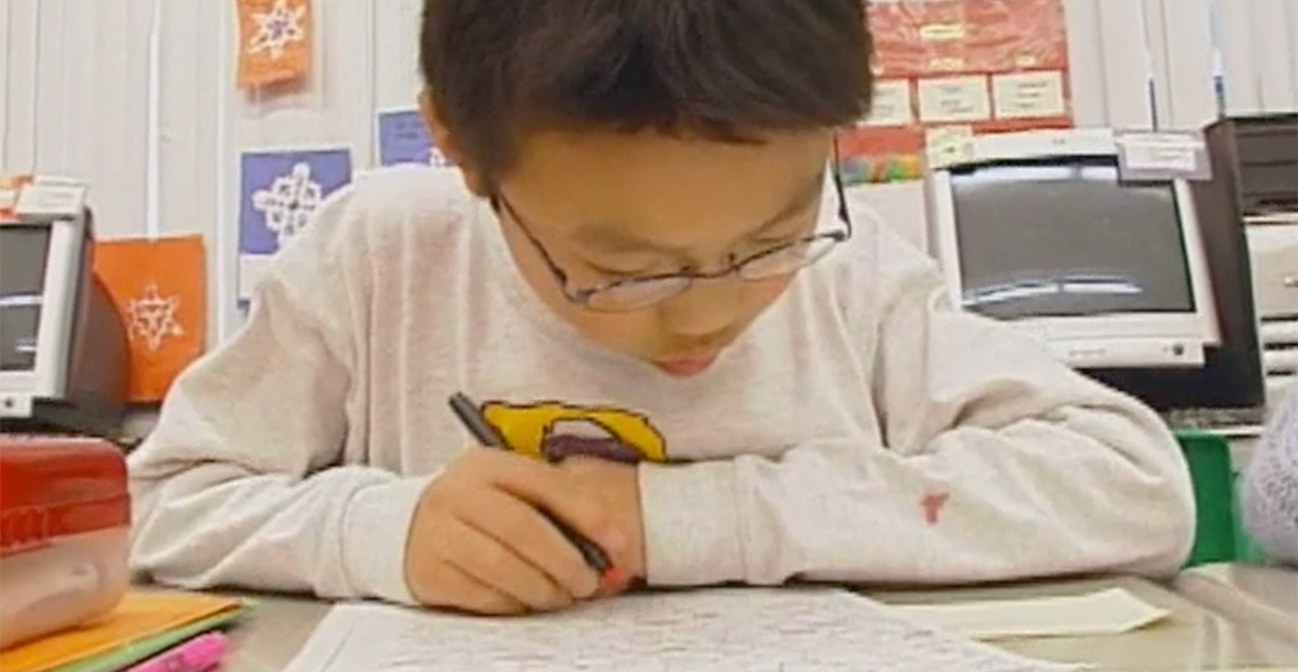Join us for conversations that inspire, recognize, and encourage innovation and best practices in the education profession.
Available on Apple Podcasts, Spotify, Google Podcasts, and more.

 What strengths and challenges do English language learners bring to the classroom? In this session, literacy and bilingual education expert Robert Jiménez examines the teaching strategies that best support the literacy development of students who are learning English as a second language. You will learn how to build on students’ first language and background experiences, and how to create a classroom environment that promotes meaningful literacy learning.
What strengths and challenges do English language learners bring to the classroom? In this session, literacy and bilingual education expert Robert Jiménez examines the teaching strategies that best support the literacy development of students who are learning English as a second language. You will learn how to build on students’ first language and background experiences, and how to create a classroom environment that promotes meaningful literacy learning.
“The best teachers of English language learners use what they know about literacy and what they know about their students to build reading and writing skills. They learn about the role of reading and writing in different cultures and communities; they use students’ backgrounds and linguistic skills as a foundation for learning; and, they give their students the tools they need to excel.”
Robert Jiménez
Professor of Education
Vanderbilt University
 Robert Jiménez is professor of language, literacy, and culture at Vanderbilt University, where he teaches courses in second-language literacy and issues related to the education of Latino students. He was a bilingual education teacher, and he has served as recruiter, teacher, and program director in migrant education for the state of Illinois. Professor Jiménez has received awards for his work, including a Garcia Robles Fulbright Fellowship to Mexico and the Albert J. Harris Award for research on struggling readers. He has published in numerous journals, including Reading Research Quarterly, American Educational Research Journal, and Journal of Adolescent and Adult Literacy.
Robert Jiménez is professor of language, literacy, and culture at Vanderbilt University, where he teaches courses in second-language literacy and issues related to the education of Latino students. He was a bilingual education teacher, and he has served as recruiter, teacher, and program director in migrant education for the state of Illinois. Professor Jiménez has received awards for his work, including a Garcia Robles Fulbright Fellowship to Mexico and the Albert J. Harris Award for research on struggling readers. He has published in numerous journals, including Reading Research Quarterly, American Educational Research Journal, and Journal of Adolescent and Adult Literacy.
If you are taking this workshop for credit or professional development, submit the following assignments for Session 6: Teaching English Language Learners.
![]()
In this assignment, you will read two articles on teaching English language learners and complete the Examine the Literature Response Chart.
![]()
In this activity, you will practice evaluating the multicultural literature in your classroom library and instructional program, using the Evaluate Your Multicultural Literature Chart.
![]()
In this activity, you will develop a questionnaire and then interview one of your English language learners.
![]()
In this activity, you will write a summary of the ideas and strategies you explored in this session.
![]()
If you are taking this workshop for credit, you will continue constructing your portfolio of instructional practices.
Drucker, M. J. “What Reading Teachers Should Know About ESL Learners.” The Reading Teacher 57, no. 1 (Sept. 2003): 20-22.
Fitzgerald, J., and M. F. Graves. “Reading Supports for All.” Educational Leadership 62, no. 4 (Dec. 2004/Jan. 2005): 68-71.
Hernandez, A. “Making Content Instruction Accessible for English Language Learners.” In English Learners: Reaching the Highest Level of English Literacy, edited by G. G. Garcia, 125-149. Newark, DE: International Reading Association, 2003.
Lucas, T., and A. Katz. “Reframing the Debate: The Roles of Native Languages in English-Only Programs for Minority Students.” TESOL Quarterly 28, no. 3 (1994): 537-561.
Smith, P. H., R. T. Jiménez, and N. Martinez-Leon. “Other Countries’ Literacies: What U.S. Educators Can Learn from Mexican Schools.” The Reading Teacher 56, no. 8 (May 2003): 2-11.
Strickland, D. S., K. Ganske, and J. K. Monroe. Supporting Struggling Readers and Writers: Strategies for Classroom Intervention 3-6. Portland, ME: Stenhouse, and Newark, DE: International Reading Association, 2002.
Tse, L. Why Don’t They Learn English? New York: Teachers College Press, 2001.
![]()
The Internet TESL Journal
This article, from the The Internet TESL Journal, provides ideas for fun games that help students practice new language skills.
Teachers of English as a Second Language (TESL)
This site is maintained by Teachers of English as a Second Language and provides resources for students and teachers including dictionaries and reference materials, information on grammar and English usage, and pronunciation.